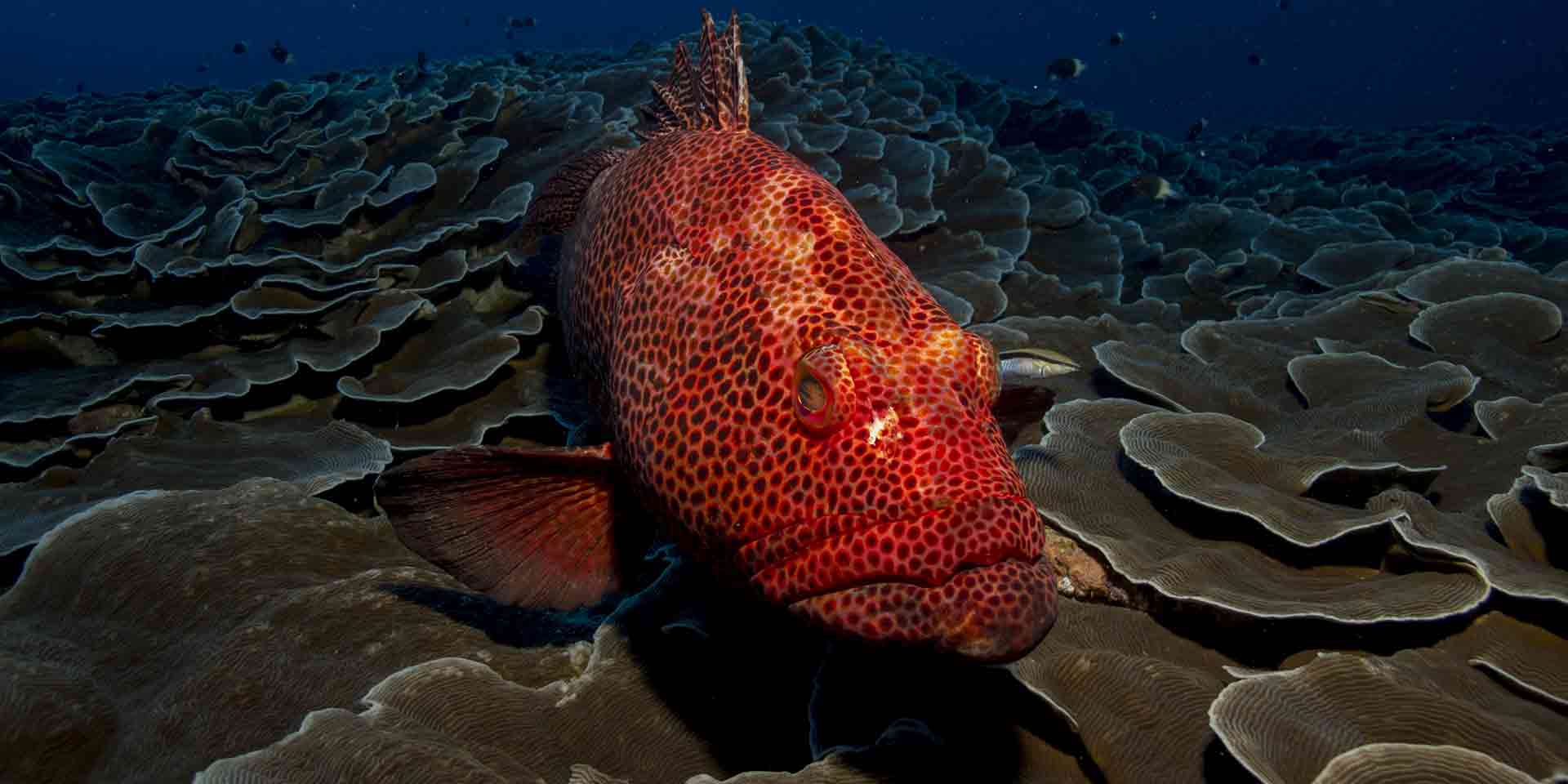
U.S. wild-caught red snapper is a smart seafood choice because it is sustainably managed under rebuilding plans that allow limited harvest by U.S. fishermen.
Learn more about red snapper in the Gulf of Mexico.
Protected Status
Appearance
- • Red snapper in deeper waters tend to be redder than those caught in shallower waters.
- They have a long triangular face with the upper part sloping more strongly than the lower.
- Their jaws are equal, with the lower one sometimes slightly projecting.
- They have enlarged canine teeth, which is why they are called “snappers.”
Biology
- Red snapper grow at a moderate rate, and may reach 40 inches long and 50 pounds.
- They can live a long time—red snapper as old as 57 years have been reported in the Gulf of Mexico and as old as 51 years in the South Atlantic.
- Females are able to reproduce as early as age 2.
- Males and females spawn from May to October, depending on their location.
- Red snapper feed on fish, shrimp, crab, worms, cephalopods (octopus or squid), and some plankton (tiny floating plants and animals).
- Young red snapper are food for the large carnivorous fish that share their habitat, such as jacks, groupers, sharks, barracudas, and morays.
- Large marine mammals and turtles also eat snapper.
Where They Live
- Red snapper are generally found at 30 to 620 feet deep in the Gulf of Mexico and along the eastern coasts of North America, Central America, and northern South America.
- They are rare north of the Carolinas.
Management
- NOAA Fisheries with the Gulf of Mexico and South Atlantic Fishery Management Councils manage red snapper in the United States.
- In the Gulf of Mexico, managed under the Fishery Management Plan for the Reef Fish Resources of the Gulf of Mexico:
- A rebuilding plan was implemented in 2005 with the goal of rebuilding the Gulf of Mexico red snapper stock by 2032.
- Annual catch limits for the commercial and recreational fisheries.
- Commercial fishermen must have a permit to harvest red snapper. Through the individual fishing quota (catch shares) program, they may harvest their quotas whenever they choose and must report how much they harvest.
- A minimum size limit protects the spawning stock and juveniles.
- For more information, visit NOAA Fisheries Southeast Regional Office’s Gulf of Mexico Red Snapper Management website.
- In the South Atlantic, managed under the Fishery Management Plan for the Snapper-Grouper Fishery of the South Atlantic Region:
- A rebuilding plan was implemented in 2010 with the goal of rebuilding the South Atlantic red snapper stock by 2044. It allows for limited harvest of red snapper as the population continues to grow.
- In 2010 and 2011, regulations prohibited harvest of red snapper in the South Atlantic to protect the population from too much fishing pressure and to allow the number of fish to increase.
- Limited harvest was allowed in 2012-2014. Harvest was prohibited in 2015 and 2016.
- For more information, visit the South Atlantic Fishery Management Council’s Red Snapper Regulations website or NOAA Fisheries Southeast Regional Office’s South Atlantic Snapper-Grouper Management website.
- State management consistency with federal management
- In the Gulf of Mexico, recreational state management measures are very different from recreational federal management measures.
- In the South Atlantic, state management measures are fairly consistent with the federal management measures noted above. Some states, such as South Carolina and Georgia, automatically adopt federal regulations while others have separate regulations.

